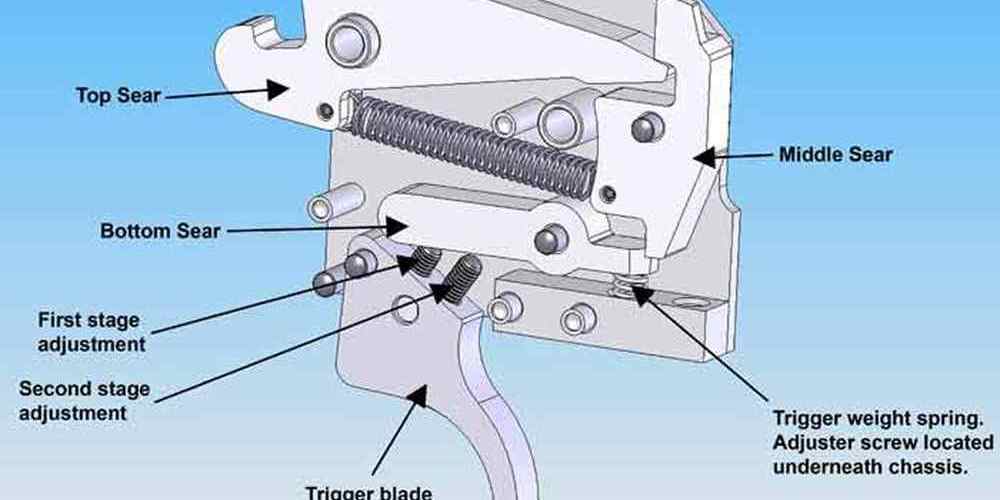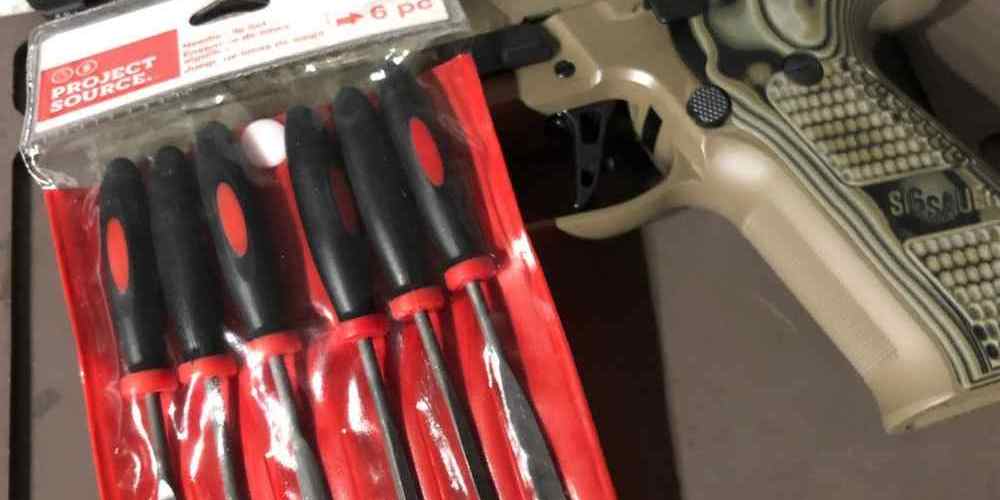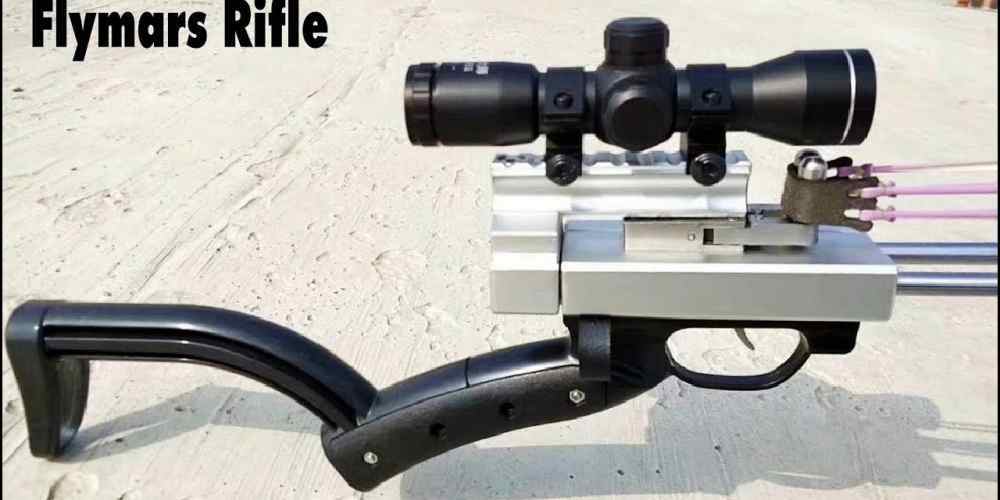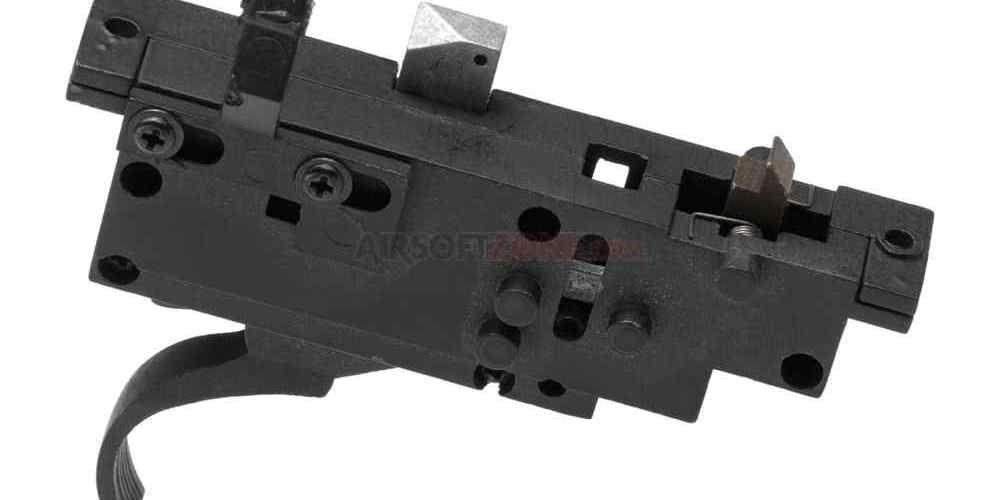“Upgrade your trigger, not your risk.”
Proper Trigger Adjustment Techniques
If you’re a rifle enthusiast looking to improve your shooting accuracy, one of the best ways to do so is by adjusting your trigger. A properly adjusted trigger can make a significant difference in your shooting performance, allowing for smoother and more precise shots. However, it’s important to approach trigger adjustment with caution, as improper modifications can lead to safety hazards and even legal issues. In this article, we’ll discuss some tips on how to safely modify your rifle trigger.
Before making any adjustments to your trigger, it’s crucial to familiarize yourself with the specific make and model of your rifle. Different rifles have different trigger mechanisms, so it’s important to understand how your trigger works before attempting any modifications. Additionally, be sure to read the manufacturer’s instructions and guidelines for your rifle, as some modifications may void your warranty or be illegal in certain jurisdictions.
When adjusting your trigger, start by ensuring that your rifle is unloaded and the safety is engaged. This will prevent any accidental discharges while you’re working on the trigger mechanism. Next, remove the action from the stock to access the trigger assembly. Use the appropriate tools to disassemble the trigger mechanism, taking care to keep track of all the components and their positions.
Once you have access to the trigger assembly, you can begin making adjustments. One common adjustment is the weight of the trigger pull, which refers to the amount of force required to fire the rifle. To decrease the trigger pull weight, you can adjust the tension screw or spring on the trigger mechanism. Be sure to make small adjustments and test the trigger pull after each change to ensure that it meets your desired specifications.
Another important adjustment to consider is the trigger creep, which refers to the amount of movement the trigger makes before the sear releases and fires the rifle. To reduce trigger creep, you can adjust the sear engagement or overtravel screws on the trigger mechanism. Again, make small adjustments and test the trigger after each change to ensure that it functions properly.
It’s important to note that trigger adjustments should be made gradually and with caution. Making drastic changes to your trigger can lead to unsafe conditions, such as unintentional discharges or misfires. If you’re unsure about how to properly adjust your trigger, it’s best to seek the assistance of a qualified gunsmith or firearms expert.
After making adjustments to your trigger, be sure to thoroughly test the rifle to ensure that it functions properly. Check for any signs of malfunction or irregularities in the trigger mechanism. If you encounter any issues, stop using the rifle immediately and seek professional help to address the problem.
In conclusion, adjusting your rifle trigger can be a great way to improve your shooting accuracy, but it’s important to approach this task with caution and care. By following the proper techniques and guidelines, you can safely modify your trigger and enjoy improved performance on the range. Remember to always prioritize safety when working on your rifle trigger, and seek professional help if you’re unsure about how to make adjustments.

Choosing the Right Trigger for Your Rifle
When it comes to modifying your rifle trigger, there are a few important factors to consider to ensure that you are doing so safely and effectively. The trigger is a critical component of any firearm, as it is responsible for initiating the firing sequence. A smooth and consistent trigger pull is essential for accuracy and precision when shooting.
One of the first things to consider when modifying your rifle trigger is choosing the right trigger for your specific needs and preferences. There are a variety of aftermarket triggers available on the market, each with its own unique characteristics and features. Some triggers are designed for precision shooting, while others are geared towards rapid-fire applications. It is important to do your research and select a trigger that aligns with your shooting style and intended use.
When selecting a trigger, it is also important to consider the pull weight. The pull weight refers to the amount of force required to pull the trigger and discharge the firearm. A lighter pull weight can result in a smoother and more responsive trigger pull, while a heavier pull weight may be more suitable for applications where a higher level of precision is required. It is important to find a balance that works for you and your shooting needs.
Once you have selected the right trigger for your rifle, it is important to install it properly to ensure safe and reliable operation. If you are not comfortable with installing the trigger yourself, it is recommended to seek the assistance of a qualified gunsmith. Improper installation can result in malfunctions and potentially dangerous situations.
Before making any modifications to your rifle trigger, it is important to familiarize yourself with the specific make and model of your firearm. Different rifles may have different trigger mechanisms and installation procedures. It is important to follow the manufacturer’s guidelines and recommendations to ensure that the modification is done correctly.
When modifying your rifle trigger, it is important to take your time and proceed with caution. Rushing through the process can lead to mistakes and potentially dangerous situations. It is important to be patient and methodical in your approach to ensure that the modification is done correctly.
After installing the new trigger, it is important to test it thoroughly to ensure that it is functioning properly. This includes checking for proper alignment, smooth operation, and consistent trigger pull. It is also important to test the trigger in a safe and controlled environment to ensure that it is functioning as intended.
In conclusion, modifying your rifle trigger can be a great way to improve the performance and accuracy of your firearm. However, it is important to approach the process with caution and attention to detail. By choosing the right trigger, installing it properly, and testing it thoroughly, you can safely and effectively modify your rifle trigger to suit your shooting needs.
Understanding Trigger Safety and Function
If you’re a gun enthusiast or hunter, you may have considered modifying your rifle trigger to improve its performance. While this can be a great way to enhance your shooting experience, it’s important to approach trigger modifications with caution. Safety should always be your top priority when working on firearms, and understanding how triggers function is crucial before making any changes.
The trigger is a critical component of any firearm, as it is responsible for releasing the firing pin and igniting the cartridge. A trigger consists of several parts, including the trigger itself, sear, and spring. When the trigger is pulled, the sear releases the firing pin, which strikes the primer on the cartridge, causing it to fire. The spring then resets the trigger for the next shot.
Before attempting to modify your rifle trigger, it’s essential to have a good understanding of how it works. This will help you make informed decisions about what changes to make and how they may affect the trigger’s performance. If you’re unsure about how triggers function, it’s a good idea to consult with a gunsmith or experienced shooter for guidance.
When modifying your rifle trigger, there are several factors to consider to ensure safety and functionality. One of the most important things to keep in mind is the trigger pull weight. The trigger pull weight is the amount of force required to pull the trigger and release the firing pin. A lighter trigger pull weight can improve accuracy and precision, but it can also increase the risk of accidental discharge.
When adjusting the trigger pull weight, it’s crucial to do so gradually and carefully. Making drastic changes to the trigger pull weight can lead to unsafe conditions and potentially cause the rifle to fire unintentionally. It’s recommended to start by making small adjustments and testing the trigger’s performance before making further changes.
Another important consideration when modifying your rifle trigger is the trigger travel. Trigger travel refers to the distance the trigger must travel before releasing the firing pin. Adjusting the trigger travel can affect the feel and responsiveness of the trigger. Again, it’s essential to make small adjustments and test the trigger’s performance to ensure safe and reliable operation.
In addition to trigger pull weight and travel, it’s also important to consider the trigger reset. The trigger reset is the distance the trigger must travel back to its starting position after firing a shot. A smooth and consistent trigger reset is essential for fast and accurate shooting. When modifying your rifle trigger, be sure to pay attention to the trigger reset and make any necessary adjustments to ensure optimal performance.
Overall, modifying your rifle trigger can be a rewarding experience that enhances your shooting skills. However, it’s crucial to approach trigger modifications with caution and prioritize safety above all else. By understanding how triggers function and making informed decisions about adjustments, you can safely and effectively modify your rifle trigger for improved performance. Remember to always test your modifications in a controlled environment and consult with a professional if you’re unsure about any aspect of the process. With the right knowledge and care, you can enjoy a customized trigger that enhances your shooting experience.
Step-by-Step Guide to Installing a New Trigger
If you’re looking to improve the performance of your rifle, one of the best upgrades you can make is to install a new trigger. A quality trigger can greatly enhance your shooting experience by providing a smoother, more consistent pull. However, it’s important to approach this modification with caution, as improper installation can lead to safety hazards and malfunctions. In this step-by-step guide, we’ll walk you through the process of safely modifying your rifle trigger.
Before you begin, make sure you have all the necessary tools and equipment on hand. You’ll need a set of gunsmithing screwdrivers, a punch set, a hammer, and of course, the new trigger you’ll be installing. It’s also a good idea to have a clean, well-lit workspace to work in.
The first step is to ensure that your rifle is unloaded and the chamber is clear. Safety should always be your top priority when working on firearms. Once you’ve confirmed that the rifle is safe, you can begin disassembling the rifle to access the trigger assembly.
Using your gunsmithing screwdrivers, carefully remove the screws holding the stock in place. Be sure to keep track of all the screws and small parts as you disassemble the rifle. Once the stock is removed, you should have clear access to the trigger assembly.
Next, use your punch set and hammer to carefully drift out the pins holding the trigger assembly in place. Take care not to damage the pins or the surrounding components as you remove them. Once the pins are out, you should be able to remove the old trigger assembly from the rifle.
Now it’s time to install the new trigger. Carefully insert the new trigger into the rifle, making sure it lines up properly with the pins and other components. Once the trigger is in place, reinsert the pins and use your hammer and punch set to secure them in place.
With the new trigger installed, it’s time to reassemble the rifle. Carefully replace the stock and tighten the screws to secure it in place. Once everything is back together, perform a function check to ensure that the trigger is working properly.
Finally, take your rifle to the range for some test firing. Start with a few rounds at a close target to ensure that the new trigger is functioning as expected. If you encounter any issues, stop firing immediately and consult a professional gunsmith for assistance.
By following these steps and exercising caution throughout the process, you can safely modify your rifle trigger and enjoy improved performance on the range. Remember, safety should always be your top priority when working on firearms. If you’re unsure about any aspect of the installation process, don’t hesitate to seek help from a qualified gunsmith. With a little patience and attention to detail, you can successfully upgrade your rifle trigger and take your shooting experience to the next level.
Tips for Testing and Fine-Tuning Your Modified Trigger
When it comes to modifying your rifle trigger, safety should always be your top priority. A modified trigger can greatly improve your shooting accuracy and overall performance, but it must be done correctly to avoid any potential risks. In this article, we will discuss some tips for testing and fine-tuning your modified trigger to ensure that it is safe and effective.
Before you begin testing your modified trigger, it is important to thoroughly inspect the modifications you have made. Check for any loose parts, worn components, or any other potential issues that could affect the trigger’s performance. Make sure that all modifications are securely in place and functioning properly before proceeding with testing.
Once you have inspected your modified trigger, it is time to test it in a controlled environment. Find a safe and secure location where you can test your rifle without any distractions or potential hazards. Make sure that the area is clear of any obstructions and that you have a proper backstop in place to catch any stray bullets.
When testing your modified trigger, start by dry firing the rifle to ensure that the trigger is functioning correctly. Pay close attention to the trigger pull weight, the smoothness of the trigger pull, and any potential creep or overtravel. Make note of any issues or inconsistencies that you may encounter during the testing process.
After dry firing the rifle, it is time to test the trigger with live ammunition. Load a few rounds into the rifle and fire them in a safe and controlled manner. Pay close attention to how the trigger performs under live fire conditions and make any necessary adjustments to improve its performance.
One important aspect of testing a modified trigger is to ensure that it is safe to use. Check for any potential issues such as unintentional discharges, double fires, or any other safety concerns. If you encounter any safety issues during testing, stop immediately and address the problem before continuing.
Once you have tested your modified trigger and ensured that it is safe to use, it is time to fine-tune it for optimal performance. Make any necessary adjustments to the trigger pull weight, the smoothness of the trigger pull, and any other factors that may affect its performance. Take your time to fine-tune the trigger to your liking and make sure that it meets your specific shooting needs.
After fine-tuning your modified trigger, it is important to continue testing it regularly to ensure that it is still functioning properly. Regular maintenance and testing will help you identify any potential issues before they become serious problems. Make sure to keep a log of your testing and any adjustments you make to the trigger for future reference.
In conclusion, modifying your rifle trigger can greatly improve your shooting performance, but it must be done safely and correctly. By following these tips for testing and fine-tuning your modified trigger, you can ensure that it is safe, effective, and optimized for your shooting needs. Remember to always prioritize safety when modifying your rifle trigger and never hesitate to seek professional help if you encounter any issues.





